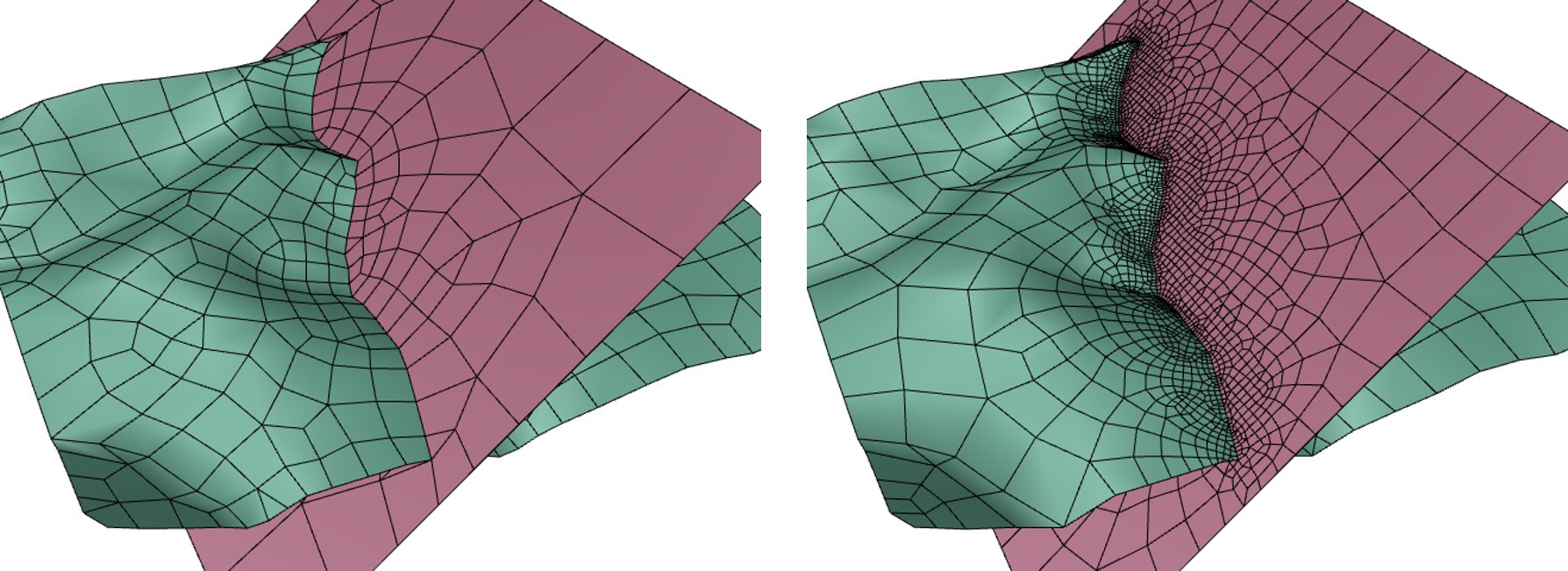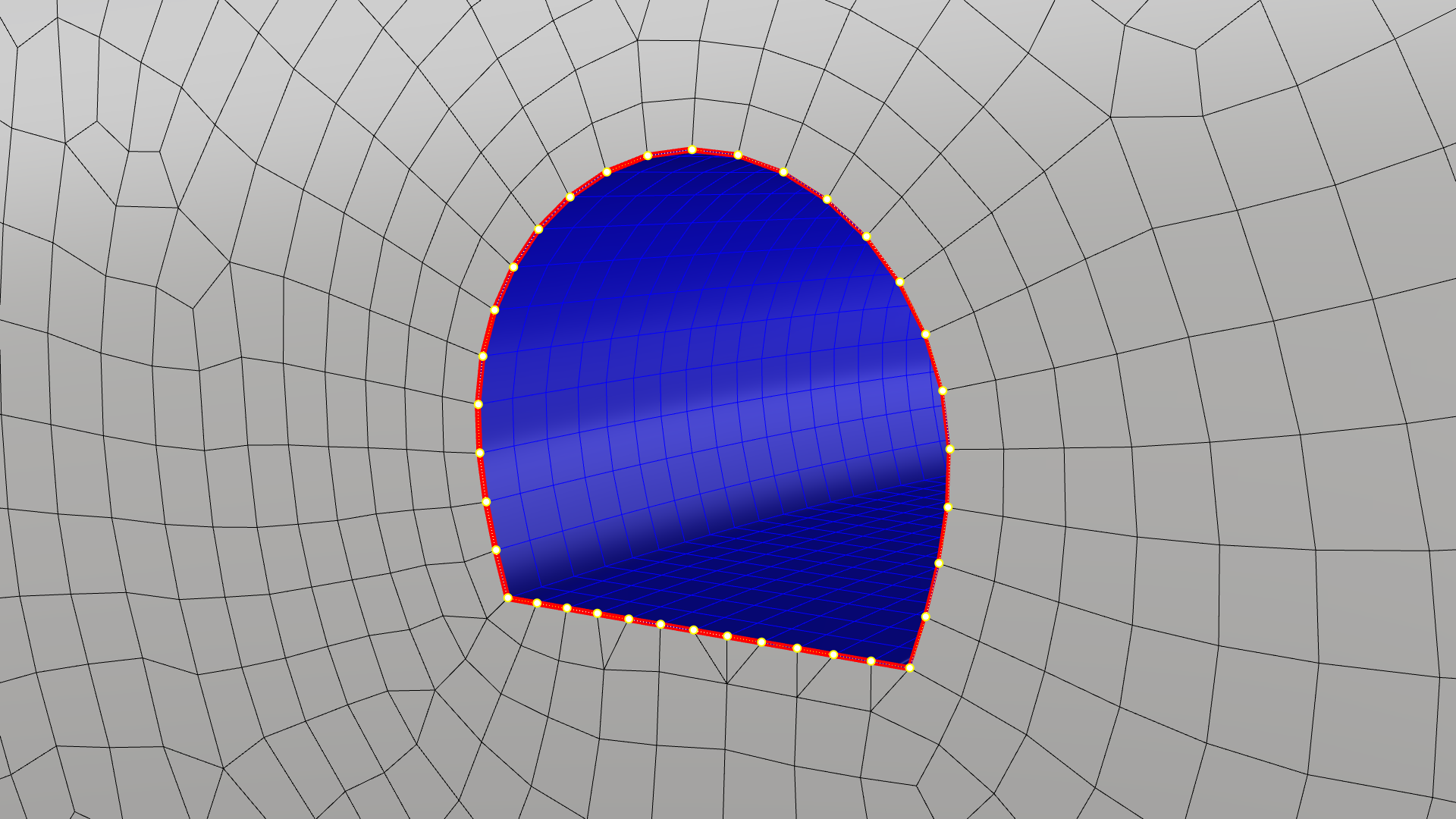In order to create a high-quality volume mesh for numerical simulations, it is important to start with high-quality surface meshes defining modeling domain and all geometrical features. Rhino 6 has a good built-in surface mesher for initial surface triangulation and meshing. Griddle's GSurf can use these initial meshes or any other surface meshes to generate high-quality surface meshes to satisfy user-specified parameters.
Three mesh types can be generated using GSurf:
- triangular;
- quad-dominant; or
- all-quad (where possible).
When remeshing with GSurf, users need to specify minimum and maximum desired mesh edge lengths and what level of details from the original mesh to keep (RidgeAngle parameter). More advanced parameters include maximum gradation (change in element sizes), level of meshing optimization, quad weight (quadrilaterals vs. triangles), shape quality (trade-off between element shape quality and element size and type), and other.

Local Edge Sizes, Hard Edges, and Hard Points
While the global parameters of minimum and maximum edge size are applied to all selected meshes, local overrides can be designated to specify the desired element size for a surface mesh or a point. Local values supersede the global edge sizes for the mesh.
Hard edges are edges that are preserved in a mesh during the remeshing process. They can be used to ensure that different meshing regions stay conformal while remeshing only some of them. For example, in order to keep proper connection between the hexahedral tunnel mesh (generated by BlockRanger) and the surface mesh around it when remeshing only the latter (figure below), the boundary edges of the hexahedral mesh should be duplicated and used as hard edges. This ensures that the two meshes stay conformal. Designating hard edges or points is done simply by selecting these objects, along with any parent meshes that have to be remeshed.

New in GSurf
- Surface remesher engine is faster and more robust.
- New default option to keep remeshed meshes separate and preserve all individual mesh information (the option can be set to merge remeshed meshes as in previous Griddle version).
- More meshing controls:
- gradation;
- weight on quadrilaterals;
- element shape quality; and
- optimization level.
- Local mesh size can be specified via URL field or name field. Using URL field is more convenient, as it allows preserving mesh names, which are transferred to the volume mesh.
- Improved logic for hard edges and hard nodes to provide precise control of local element sizes.
